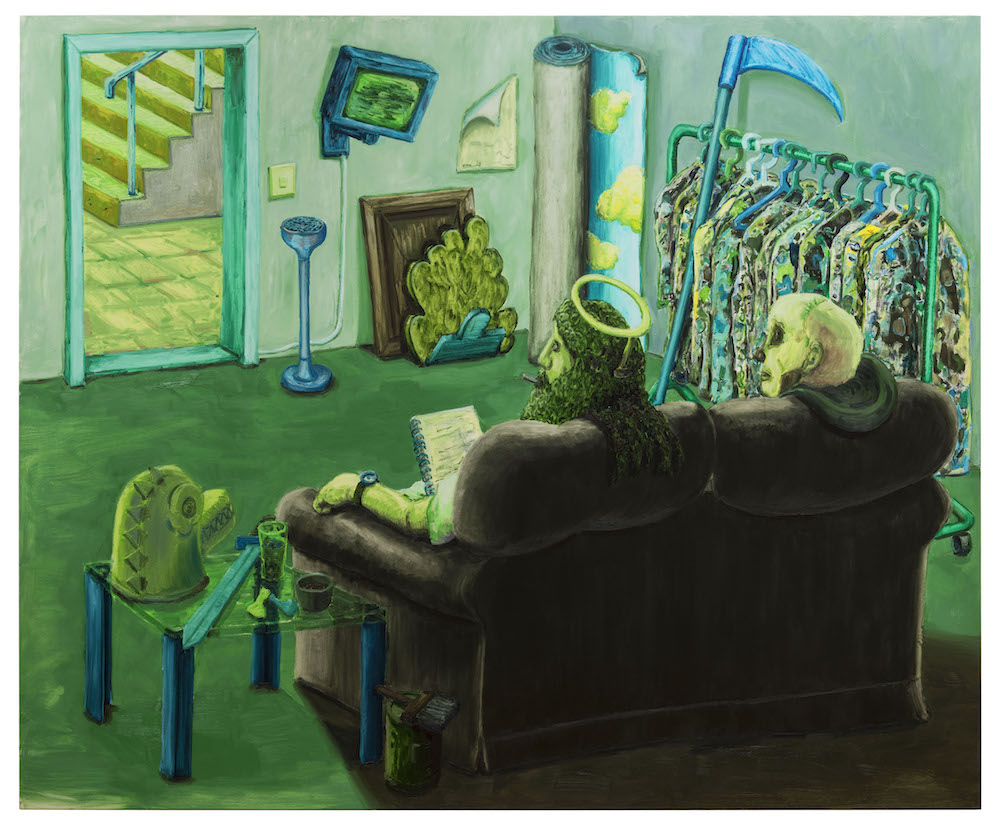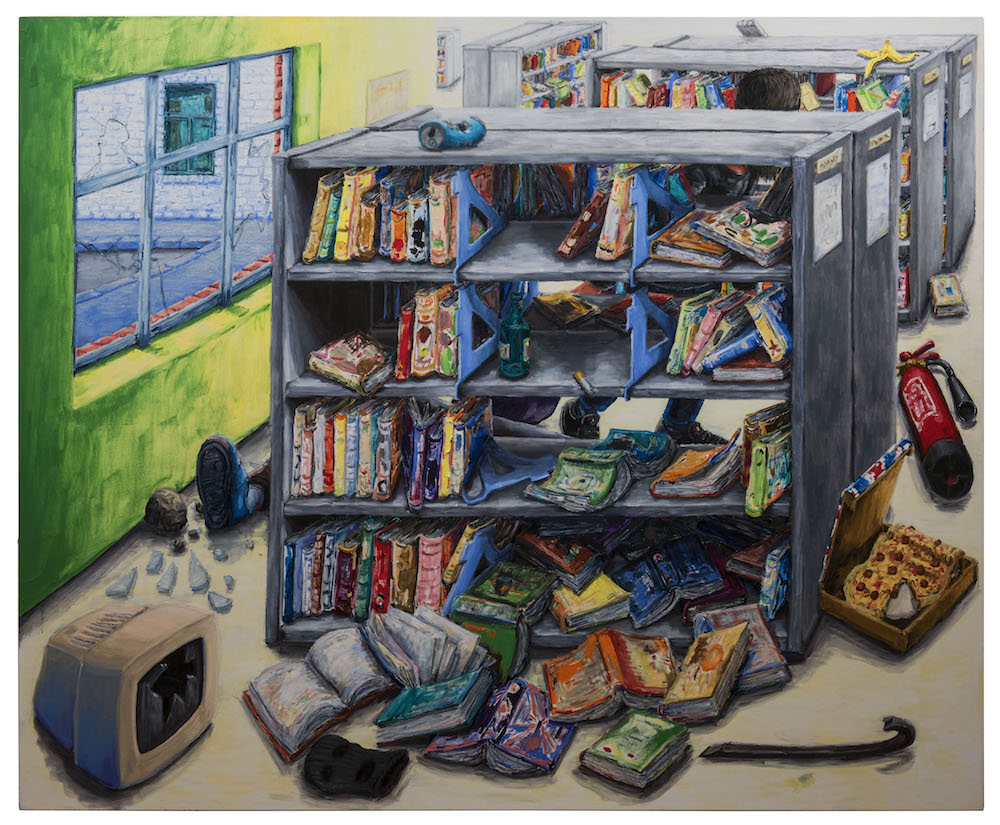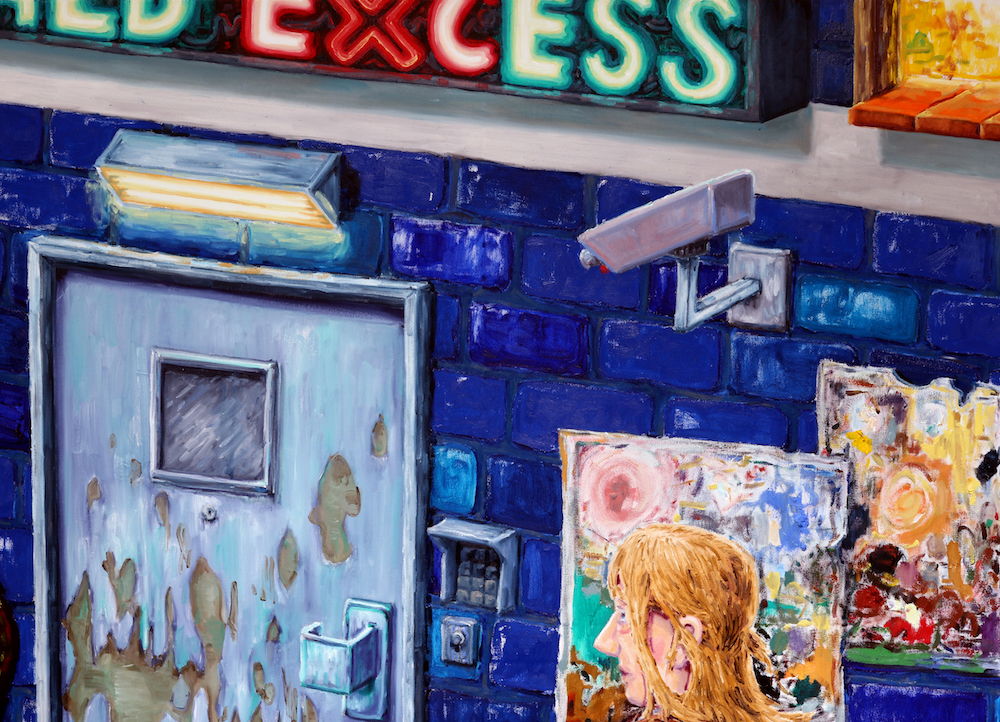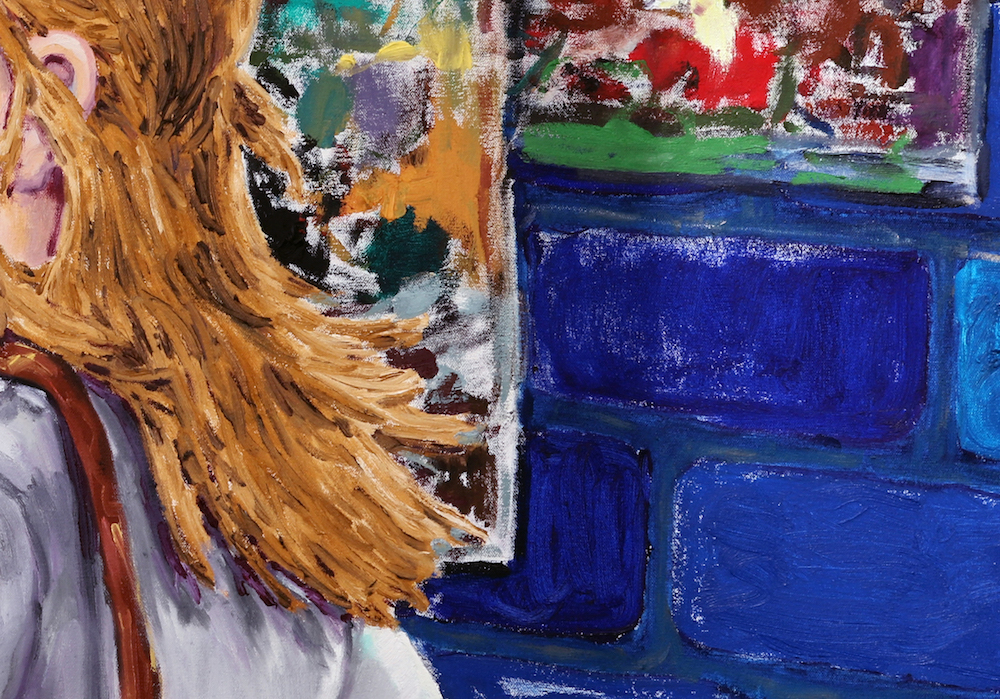
Can you tell me a bit about Basement Odyssey?
Basement Odyssey is the title of my current show which consists of a new group of 4 paintings. When I think of the word odyssey, I think of Homer’s Ulysses, which for all its epicness is initially just a story of someone trying to get back home. In a similar way, Basement Odyssey is also a simple journey that becomes increasingly complicated. Across the sequence of paintings, you start from an exterior view of a street, you then go into a building and down into its basement where the floor ultimately dissolves into lava. As you go through these paintings you also go back through time. I find it fascinating that, especially here in London, there is so much history right underneath our feet. It seems to me that if you can just keep digging you could go right back to the beginning of time. For me, these ideas relate to the processing and storage of information and narrative, how this functions in a painting, compared to, for example, your mind or memory, literature or the Internet, and how we try, through a mixture of fact and fiction, to make sense of the world.
Your paintings, as groups and triptychs, are designed to take the viewer on a journey throughout the space. Do you always work on series of paintings together with this in mind, or might one piece spark another?
Although there are four paintings in this show, I did plan it all out as one piece. In general, one work would definitely spark ideas for another painting. But this doesn’t always happen immediately, sometimes there’ll be months between works that are closely related. There are different strands that I work on, and I return to these ideas at different times as they come together and branch off over time. When I have a show, for example, I take stock of what is going on and try to see how I can tie these things together.

Willem Weismann, Library Looting, 2015 Courtesy of the artist and Zabludowicz Collection
Many of your paintings reference hidden histories. Have you worked with the particular space and history of Zabludowicz Collection while creating this show or is it more of a general idea of history and secret space that you like to work with?
Well, I’ve always liked the scope and inclusiveness of large-scale paintings like triptychs, altar pieces or ‘grand’ paintings in general. And it seemed to fit well with the history of the space, which is an old church. I wanted the paintings to really fill up the space, and to hopefully overwhelm the audience when they come into the space. When the audience comes in from the street and goes into the Zabludowicz Collection building to see the paintings, they will find this small journey echoed by what happens in the paintings.
In general, this uncovering of histories or what is hidden comes back in various ways in my work. I think there is a lot of glossing over and simplification going on today. For whatever reason, it seems that everything increasingly needs to be polished into bite-sized chunks and turned into a yes/no question. In my experience, both of the world and in painting, things are usually more complicated and chaotic than that. So in my work, I try to complicate things both in how and what I paint. I use part of the canvas as a palette which creates a kind of distraction but can also be used to read back into the construction of the work. To give another simple example, I just found a tube of paint in my studio that I haven’t used for years. I now want to use it for the next painting, just because I didn’t use it before. There are so many little decisions, conscious and unconscious, that are not related to the work at all that end up being a part of it. I try to show some of that.

You’ve previously cited Andrea Mantegna’s painting series The Triumphs of Caesar as an inspiration. What about these paintings appeal to you?
I was visiting Hampton Court earlier this year and I already was planning to do a series of connected paintings. I had already seen it a few years ago, but when I saw Mantegna’s Triumph again it really inspired me, which for me is very unusual. Something clicked when I saw this endless parade showing the glory and power of Caesar. It seemed so over the top and it had a very comical side to it, like a shaggy dog story. I tried to adapt the idea and take its expansiveness further by marching further, all the way back to the beginning of time. So it was mostly just riffing off the idea of it, there’s no visual reference. After seeing it at Hampton Court I didn’t really look at The Triumphs of Caesar while making the painting, I only looked at it again online recently.

How do your inspirations outside of painting feed into the work, such as video games and moving image? Do you hope for the paintings to evoke a similar response in the viewer or is it more about borrowing the structure and process?
Like The Triumphs of Caesar, I don’t think many people will be able to place the reference to the video game Manhunter in the work, and that is fine. It’s not that important to me that the audience knows exactly where everything comes from, although it’s interesting that a lot of the time people do pick up on the video gamey-ness of my work without there being explicit references to it. For me personally, it’s more important and interesting that these widely different sources filter through in the work, and I like thinking about how to combine these things. I guess you could say my mind is a garbage dump of memories and experiences. I find it interesting to see what comes up and what you can put together from this lifetime of living. In the way I work, ideas usually start off intuitively or subconsciously. From there on I try to develop them by putting them in contexts that make sense to me.
‘Basement Odyssey‘ is showing at Zabludowicz Collection as part of Zabludowicz Collection Invites until 18 December.






